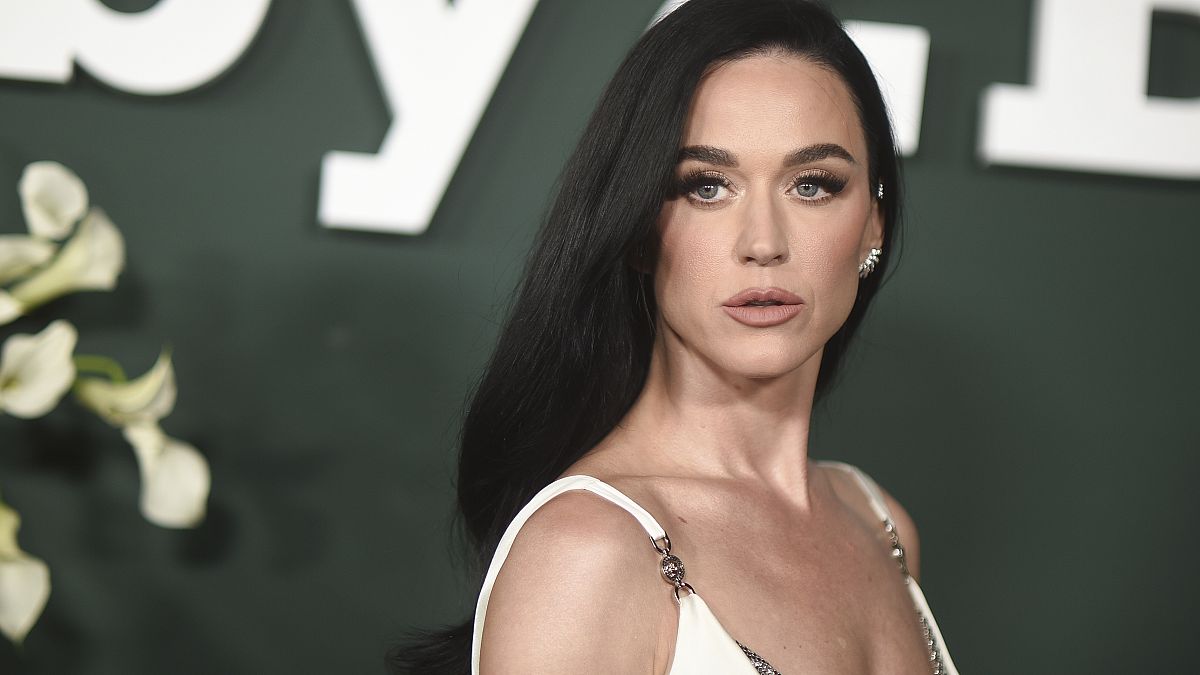Fashion
On The Many Virtues Of Critique; A Fashion Conversation With Ryan Yip

Fashion makes statements, it communicates. Shalom Harlow during the finale of the Alexander McQueen Spring 1999 RTW show. (Photo by Victor VIRGILE/Gamma-Rapho via Getty Images)
Gamma-Rapho via Getty Images
“I want to say,” Ryan Yip said to me, “and this might be a bit outrageous, that there’s something lacking in the fashion criticism scene.” I had asked Yip if he might be interested in a conversation about a topic I’ve been mulling over for a while now, and he graciously agreed. I asked him to talk to me about the lack of criticism in fashion in 2024. Not picking apart perceived faults, but legitimate critique.
“It’s not as vibrant as art criticism or literature criticism,” Yip said. “I’m not sure if it’s because fashion is such a practical art form, that people got caught up in the physical, the description and everything. I think those who excel as fashion critics still, in a way, lack the not ability, but the initiative to form a bridge between the audience and help them understand what’s good and bad about certain collections. Because describing something that doesn’t go together, people can understand that. But that comes off as pretty subjective. And it’s not enough to convince someone.”
I cannot help but wonder what we are losing by not having industry-embraced critics the way, as Yip suggested, that they exist in art and literature, two examples of other industries that straddles all the differences between the ivory tower and the marketplace. When they are forced to get along, it is to the benefit of all.
You cannot convince me that Vivienne Westwood didn’t tell stories and state opinions with her work. (Westwood prepares a model before her 2016 Spring/Summer RTW show, on October 3, 2015, Paris. AFP PHOTO / PATRICK KOVARIK via Getty Images)
AFP via Getty Images
It used to be more of a thing, industry-embraced fashion crit. From Lois Long to Virginia Pope, I could recite a litany of thoughtful fashion writers whose names seem to have been forgotten. Thank God we have Robin Givhan and Vanessa Friedman, what they do is not criticism exactly but we are still lucky to have it. Because this deficit leaves a white space. Understanding the losses (that could become benefits) seems like the most realistic way to convince you that there is much to gain by fashion embracing formal critique. Doing so would be good for business, and for everyone who loves clothing, even those of us who only wear it.
If you are interested in fashion, then you probably already follow Ryan Yip. The social media content he produces is a cut above much of what you’ll find on Instagram or TikTok. He’s interested more than the surface-level superficial, he wants to help you to think about clothing. Yip actively works to convince his audience it is worth considering what they wear and why that matters. I love questions like the ones he poses and conversations like the ones he instigates. As my readers will know, I believe that fashion (and costume) are much more than pomp and circumstance, and that is has important uses beyond aesthetic and decoration.
So, what would need to happen, to make fashion criticism an accepted part of the industry?
“Number one,” Yip told me, “people need to actually know what criticism is, including those who write it. Those who critique need to understand that their work can’t come off as mean spirited. It needs to actually be constructive, and be written with that intention. On the other hand, brands and designers need to be willing to admit that this can be helpful.”
Susan Sontag would want us to engage in critique. Sontag signing copies of her book ‘The Volcano Lover,’ New York, New York, 1995. (Photo by Rose Hartman/Getty Images)
Getty Images
He’s right, it would take both sides, both makers and consumers. It’s too easy to snark behind a phone screen or keyboard, a fact that has likely contributed to the position we find ourselves in today. “People would need to open up a bit more to actual criticism,” Yip explained, “not just random comments online out of nowhere. It takes both sides to make this happen. And currently, I don’t see that being possible, because both sides are pretty extreme.”
Critics do more than label work as good or bad. They offer context, articulating how work fits into a cultural moment, drawing throughlines between present and past, pointing out references, homages and Easter Eggs. Critics are not entirely historians, nor strictly journalists or judges; a good critic engages directly with work and instigates dialogue.
This seems like a good place to pause and offer a little context. Regardless of anyone’s opinions, it is a fact that fashion content is everywhere, both online and in physical or digital print. This is with good reason as the global apparel market makes up an estimated 1.2% of global GDP, with apparel revenue in the United States expected to generate some $770.9 billion by the end of 2024. Beyond the numbers, fashion brands and houses produce and show at least two collections a year (Spring/Summer and Fall/Winter) and many offer additional collections like Holiday and Resort. So it makes sense, purely from a business standpoint, that for nearly every collection shown at any Fashion Week, innumerable content follows, often the same day that models walk down a runway. “I kind of view fashion weeks as trade shows,” Yip told me. “I didn’t always, but essentially they are, just really glamorized.”
A fashion show can have a message. Is it better when they do? I think so. Niki Taylor at the John Galliano RTW Spring/Summer 1994 show, aka Princess Lucretia. (Photo by Victor VIRGILE/Gamma-Rapho via Getty Images)
Gamma-Rapho via Getty Images
Following the conclusion of any fashion week we always get inundated with pieces covering new collections. The in-depth articles mostly come from Women’s Wear Daily, an industry trade journal known as The Bible of Fashion. Fashion magazines sometimes publish photos of each new garment shown online. Depending, of course, on the prestige and name recognition of both the brand (or designer’s name) and the publication. Newspapers with dedicated style sections, like The New York Times, offer context. Beyond that, the conversation about the current state of fashion is relegated to editorials exploring trends and fads, or pieces examining the current state of the apparel market and the direction the fashion economy appears to be taking.
Because clothing is big business, even when it is in the background, a large percentage of fashion coverage is related to high profile events, and what famous people wear while attending them. For every Red Carpet event worth televising, or big enough to draw press, it is nearly certain that “best” and “worst” dressed lists will be generated and then make the rounds on social media. Often these will get the most attention when translated (diluted?) into meme form. Beyond these inventories, the Big Name designers and creative directors working at the Big Name brands often get glossy editorials timed to support newly released collections. There’s also the occasional historical piece, usually tied to an event which has made the news or because a trend in online searches appears positioned to generate significant sales before the public becomes tired of it. Fashion content is legion. What fashion doesn’t have much of is serious and legitimate criticism. Why not? “In a practical sense,” Yip said, “it helps to remind myself that this is ultimately a business, you have to remember that.”
Christian Lacroix’s body of work is the perfect example of fashion as an artform. (1997 Spring/Summer fashion show. Photo by Pierre Vauthey/Sygma/Sygma via Getty Images)
Sygma via Getty Images
Fashion is business, it’s big business. But fashion is also an art form, or it can be. It lives in two worlds and has two masters, function and form, though style (or the perception of style) can sometimes seem to be diametrically opposed to substance. But fashion is hardly the sole creative industry which comingles artistic ideals and the realities of commerce under capitalism. In both literature and fine art, the professional critique is seen as useful by both sides of the equation.
Since 1970 there has been a Pulitzer Prize for criticism. The internet’s favorite art critic, Jerry Saltz of New York magazine, received the prize in 2018 in recognition of his body of work. Both fine art and literature have healthy, vibrant dialogues ongoing between creators and critics. Both creative industries enjoy a reciprocal relationship with those who critique, no matter how much any specific notes might sting the artist or writer who created the work being discussed. Those who produce creative work, and those who examine it in search of deeper meaning, they both do better work because of the other. Together, they bring prestige to their industries. Which in turn offers the customers and clients more than simple perceived value should they decide to make purchases.
Personally, I believe the dearth of industry accepted critics is related to the many mysteries which surround fashion, smoke and mirrors that stay where they are because of a lot of effort to keep them there. People, in general I mean, are probably a lot smarter than our current cultural stance would suggest. We may not always know what we know, but perhaps everyone has an interest in a little more benefit of the doubt. This is another one of the reasons I became a fan of Yip’s work; I like the gentle way he encourages and educates. Moreover, I like the way he asks people to trust what they like and to seek out more information about those specific things. This is a fine way for an autodidact to acquire a fashion education.
“There’s a designer called Dr. Noki. Crazy Guy, crazy fun. Guy cannot shut up about his work, love him,” Ryan Yip said. (Photo from September 15, 2019 in London, England. By David M. Benett/Dave Benett/Getty Images for Ace Hotel)
Dave Benett/Getty Images for Ace Hotel
“You said your reader, like most people, knows more than they think they do,” Yip said to me, after I figured out a way to work what I wrote in the last paragraph into a question. “You have to help them realize that, that’s my approach. I’m really upfront about what I am doing. I am making videos. I am talking about fashion. As I learn, I never try to position myself as an expert that knows everything.” He went on to tell me about a phenomenon I have experienced many times myself, something that happens to be one of my favorite parts about the community I have been able to build through my own Instagram page.
“Through many of my videos,” Yip explained, “in my comment section, a lot of people will say things like, ‘oh, I worked with a certain designer,’ or, ‘I worked at their boutique for how many years and this is what happened.’ There are a lot of people with insider industry knowledge, stuff that they think is normal. It’s normal to them because they’ve been working at X brand for 20 years,” Yip said. “Now, I read about fashion every day. Even though they are just a random person commenting on my video, I’ve learned something from them. That’s something that I treasure a lot. I don’t want to discount anyone’s experience, ever. I want everyone to be able to participate in the conversation, because you never know what you might learn from the next person, even from just a comment.”
Ryan Yip, a fellow fashion intellectual.
Courtesy of Ryan Yip
Ryan Yip is right, something I know from many of my own personal experiences. Talking with him, I felt that the places where what he and I do overlap, they were further proof that we need to build dialogue. Ryan Yip would like you to to listen and ask more. To find out what parts of fashion interest you most, and then learn more about those things specifically. Considering his mission, and I’m pretty comfortable saying that he and I agree that more fashion criticism would help. It would make fashion better.
“I want to be able to reach a point where my words, my so-called criticism or analysis, can work with artists instead of having them always kind of view journalists or writers as someone that’s against them,” Ryan told me. “I want to be able to work with them, because that is what I think criticism is for. Like at school, the teacher here is to try to help you to be better, whether you agree with them or not. If you don’t agree, then you take what resonates with you and you ignore the rest. But you don’t just demonize your teachers, thinking that they’re there to trash your work. That’s what I want to achieve.” Personally, I think he can do it. And I look forward to seeing it happen.






